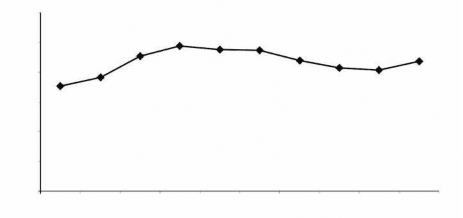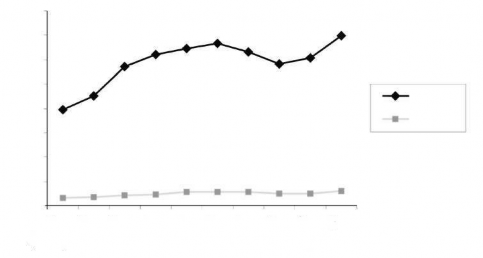Read Handbook on Sexual Violence Online
Authors: Jennifer Sandra.,Brown Walklate
Handbook on Sexual Violence (5 page)
Jennifer Brown and Sandra Walklate
Meet Jennifer Brown
Jennifer Brown is a visiting professor at the London School of Economics where she is the Deputy Director of the Mannheim Centre for Criminology. She is enjoying what might be considered an extended sabbatical, catching up on writing and publishing, having spent the last several years as head of Surrey University’s Department of Psychology. Her earlier work looked at sexual harassment, which was stimulated by observations of the experiences of policewomen when she was the research manager for Hampshire Constabulary. More recently Jennifer has been involved in research projects looking at rape, and has supervised several PhDs including one on police decision-making and another on drug-assisted rape. In 2010 she helped put together the literature review for Baroness Stern who, at the last government’s invitation, examined the investigation and prosecution of rape in England and Wales.
Meet Sandra Walklate
Sandra Walklate holds the Eleanor Rathbone Chair of Sociology, a title she holds with particular pride, not just because it is a Chair but also because of the name it honours. Eleanor Rathbone was an active campaigner for social justice that included campaigning on issues relating to women. While sexual violence is not exclusively experienced by women, it is the commitment to social justice that links the work Sandra has been involved with in relation to victims of crime to her involvement with sexual violence. Having spent a good number of years working with a range of victim-oriented organisations as a volunteer, trainer and adviser and having also worked with a number of police forces on training officers responding to sexual violence, Sandra’s concerns on these issues are not purely academic. They also stem from trying to understand and help individuals deal with the real problems they may face in their working lives in the best interests of those with whom they are working.
Central themes
When Liz Kelly published
Surviving Sexual Violence
she gave voice to women against the backdrop of an environment in which society was at best reluctant to admit the extent of the violence and the harm it wreaked on its victims and was at worst victim blaming (Kelly 1988). The book’s central themes were that sexual violence is part of many women’s lives, that a wide range of male behaviour is abusive to women, and that the social context of sexual violence is men’s power and women’s resistance. In the two decades since that book was written, important reforms and advances have been made in reforming ways of dealing with complaints of sexual violence. In England and Wales, the Sexual Offences Act of 2003 was a major overhaul and consolidation of legislation. The Youth Justice and Criminal Evidence Act of 1999 introduced special measures to protect vulnerable witnesses including video links and screens in court. Police training has been updated as described in Horvath and Yexley’s Chapter
5 and Sharon Stratton’s practitioner commentary in Chapter
6. They refer to the introduction of sexual assault referral centres (SARCs) and independent sexual violence advisers (ISVA) where victims of sexual violence can receive medical care, counselling and support throughout the criminal justice process (see Westmarland’s Chapter
13 for a discussion of these initiatives). Rape shield legislation designed to curtail the use of questioning about the past sexual history or character of complainants has been introduced in the UK, Australia, New Zealand and the United States of America (see for example Jordan 2008 about developments in New Zealand). So, is the battle won in recognising and reducing sexual violence and processing its perpetrators through the criminal justice system? Or, as Jan Jordan opines in Chapter
12, this volume, do women’s voices remain muted? The story of John Worboys is instructive when considering the answer to these questions.
Worboys was the driver of a London black cab. London cabbies are licensed and enjoy something of an institutional reputation as trusted commentators on London life. A number of women made complaints of an assault that took place in a black cab in different parts of London. It appears that the women passengers were invited to share in the cabbie’s windfall by drinking a glass of champagne that, unbeknownst to them, was spiked. Once the woman was insensible, Worboys sexually assaulted them. Not only were these complaints not collated so that a pattern could be seen to be emerging, but also as the subsequent Independent Police Complaints Commission’s investigation revealed, the detective constable in charge early on in the enquiry was of the opinion that, given the victim could not remember anything past getting into the cab, it would seem unlikely that a cab driver would have alcohol in his vehicle, let alone drug substances (IPCC 2010: 10). The IPCC was of the view that a mindset had been formed ‘that a black cab driver would not commit such an offence. This mindset would have meant that the cab driver, rather than the victim, had been believed, and it would have damaged the victim’s confidence in the police handling of her allegation.’ In another instance, case papers relating to a complaint were lost. Worboys was first identified as a suspect in July 2007 but it was not until February 2008 that he was charged with a large number of sexual assaults dating back to October
2006. He was found guilty and sentenced in April 2009. Some 80 victims contacted the police after Worboys’ arrest, many not previously having reported their assault to the police.
The Independent Police Complaints Commission (IPCC) charted the
progression of the Worboys enquiry. After the July 2007 arrest it was decided there was insufficient evidence to take the case to the Crown Prosecution Service (CPS). The IPCC noted that there were not only failures to comply with standard operating procedures for the investigation of rape but also systemic failures to identify and link offences. The IPCC concluded that there had been a poor initial investigative response, a failure to trust victims, failures in front line supervision, and a lack of facility to cross-check systems to link similar offences. They did not substantiate a complaint that a particular complainant had been dealt with in an insensitive manner, or that she had been given misleading information by the sexual offences investigative techniques officer, but they did find that the detective sergeant missed crucial investigative opportunities. Such a story is not peculiar to the UK. Jordan (2008) relates a similar catalogue of disbelief and premature closure of a rape investigation that led to a Commission of Enquiry into the conduct of the New Zealand Police which revealed major flaws within the police and the wider criminal justice system. Her chapter invokes the concept of ‘silencing’ to argue the case for systemic failures of the criminal justice system, and indeed the academic community for failing to hear the voices of those suffering sexual violence.
This is not a singular failure because embedded in the Worboys case are patterns of the bigger picture relating to sexual violence: underreporting, attrition of cases as they drop out at key stages of the criminal justice process, disbelieving of complaints and giving men’s explanations greater credence than those of the women complainants. In England and Wales the British Crime Survey reveals that a significant number of victims tell no one about their assaults with only 11 per cent making a report to the police (Povey
et al
. 2009). The voices heard in Liz Kelly’s book seemed to have been muted again and the chapters in this Handbook revisit the issues raised by Kelly’s text.
Scale of sexual violence
Statistics on sexual violence demonstrate the universal finding that more cases occur than are dealt with by the courts (see for example Kelly and Lovett’s 2009 analysis of European data). By way of illustration of this point, it can be shown that the UK Home Office rules for recording sexual crime counted 43,579 serious sexual offences in 2009/10 (Flatley
et al
. 2010). This represents a 7 per cent increase compared with the 40,748 recorded in 2008/09. Previously there had been a decrease in reporting.

50,000
40,000
30,000
20,000
10,000
0
2000/1 2001/2 2002/3 2003/4 2004/5 2005/6 2006/7 2007/8 2008/9 2009/10
Figure I.1
Recorded crime in England and Wales of the most serious sexual offences 2000– 2010

Within this 2009/10 total, police-recorded rapes of a female increased by 15 per cent to 13,991 offences, and sexual assaults on a female increased by 1 per cent to 19,873 offences. Rapes of a male increased by 22 per cent to 1,174 offences and sexual assaults on a male decreased by 2 per cent to 2,270 offences. This trend also reverses a previous downturn.
14,000
12,000
10,000
8,000
6,000
4,000
2,000
2004/5
2003/4
2005/6
2007/8
2000/1
2001/2
2002/3
2009/1
0
2006/7
2008/9
female male
Figure I.2
Recorded crime of rape of males and females in England and Wales 2000–2010
Table I.1
Police and CPS data on numbers of domestic violence incidences and rapes 2006-2009

2006/7 2007/8 2008/9
Domestic violence | |||
Reported to police | 336,600 | 376,550 | 337,450 |
All dealt with by CPS | 66,639 | 74,065 | 80,423 |
Charged | 36,957 | 47,115 | 52,412 |
Convicted | 19,978 | 19,842 | 18,629 |
Rape | |||
Recorded by police | 12,624 | 11,629 | 12,140 |
All dealt with by CPS | 6,590 | 5,722 | 6,597 |
Charged | 1,963 | 2,220 | 2,565 |
Convicted | 1,778 | 2,021 | 2,018 |
The number of suspects charged for domestic violence and rape is a fraction of the number of reported or recorded cases. The rates of convictions for domestic violence as a function of those reported to the police are about 6% and about 17% of all recorded rapes (this figure is about 6% of all reported rapes).

